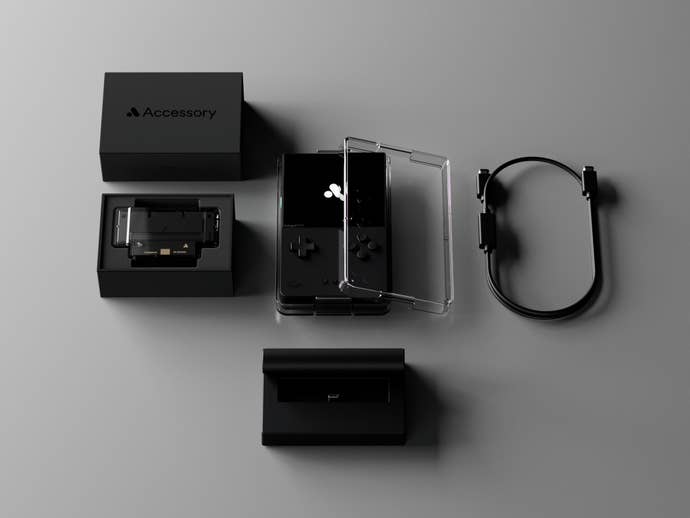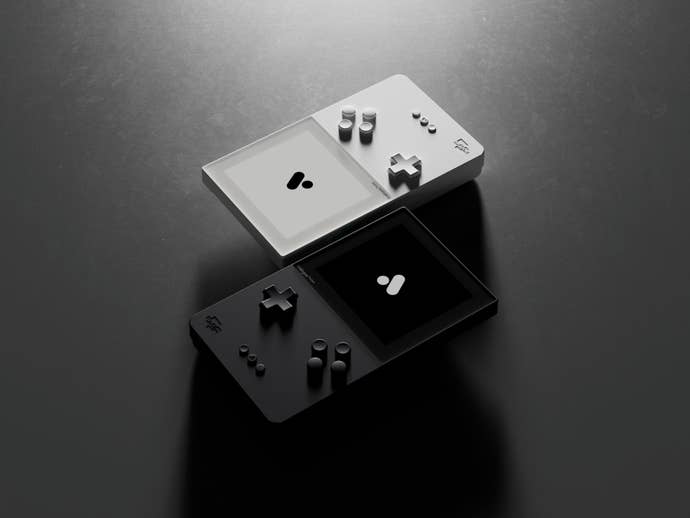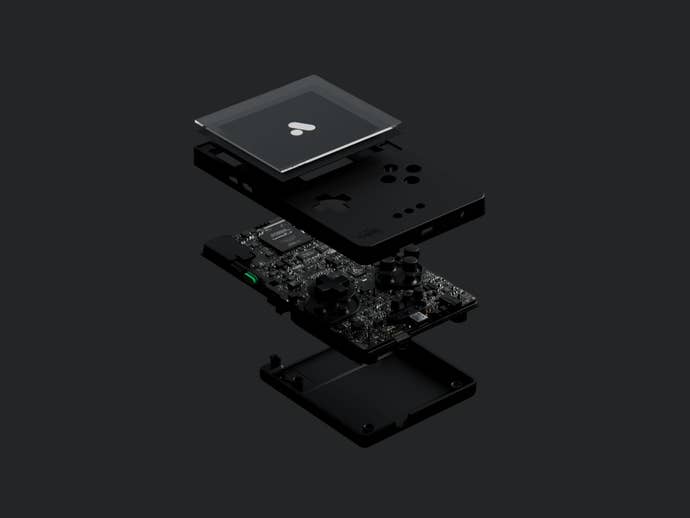The Analogue Pocket is the best gaming hardware I’ve used in years
The modern-retro maestros at Analogue are back. Their latest system, a tribute to handheld gaming, is their best yet.
We are entering a golden age of retro gaming. Modern video games are also pretty good right now, of course, but if you have a love of the old stuff, this is an unprecedented time. Technology, fan interest, and the right clever brains behind-the-scenes are lining up in just the right way to make playing old games as hassle-free as it is nostalgic, and as era-accurate as it is thrilling. The new embodiment of this era? Analogue Pocket, the greatest Game Boy ever made.
Regular VG247 readers will of course recognize the company Analogue thanks to its status as a regular staple of my detours into the world of retro gaming. In many ways, Analogue Pocket feels like the machine the company has been building to over its last several products. This isn’t to diminish the achievements of the high-end versions of the Super Nintendo, Mega Drive, and NES that the company has released before, as these are all still incredible products. But something about the Analogue Pocket feels like a true culmination of all that research and development expense so far.
So, what is it? Well, if you’ve not been following the lengthy run-up to its imminent release, the Analogue Pocket is a Game Boy for the modern age. It features a beautiful modern screen and a sturdy, premium-feeling modern design. It takes your original cartridges, and out of the box is compatible with over 2700 Game Boy, Game Boy Color, and Game Boy Advance cartridges. But in many ways, that description doesn’t really do Pocket’s lavish nature justice.
Like the other Analogue products, the best analogy to probably draw is to the renaissance of music on vinyl and high-quality record players. Yeah, you can emulate games pretty easily on a wide range of devices these days - but there’s something special about dedicated hardware. Furthermore, there’s an accuracy and quality to be found in running games on original hardware that can’t be attained through emulation. Just as with vinyl, as nerds realized this and the price of original hardware began to climb, enterprising folks tried to figure out a way to create modern-retro hardware. Of these companies, Analogue has now cemented itself as the best of the bunch.
Don’t get me wrong; this is a premium device and carries a premium price tag. It isn’t for everyone. At $220, it’s more expensive than a Nintendo Switch Lite - but this also isn’t a product for those who aren’t dedicated to the retro craft. That’s depicted firmly in the quality, in the options, in the level of engineering that’s clearly gone into the Pocket - which surely must have been expensive.

The Pocket’s form factor owes the most to the Game Boy Pocket, though it takes cues from every generation of Game Boy. Coming in sleek black or white, there’s an Apple-like air to its industrial design. Handheld game devices often look like toys, especially ones of the era the Pocket channels - but this is a device for grown-ups. It’s got that adult feel where one suspects it’d be fine if you dropped it - but it’s also so nice-looking that you’d be heartbroken to do so.
The design channels the general feel of the device, a symphony of old-meets-new. A gorgeous modern display is set into a traditional design rather than something more modern like a clamshell, for instance. USB-C and SD card ports sit just aside from the original Game Boy link cable port, used to play multiplayer with other Analogue Pockets or even original hardware. It’s cute. Probably the only way in which the device is inferior to original hardware is in battery life, where the modern stuff takes its toll and gives users a little over six hours before needing a top-up.
The star of the show is the screen, a 3.5-inch, 615 PPI LTPS LCD panel that runs at a resolution of 1600x1440 - ten times that of the original Game Boy. This is an unusual resolution on paper, but makes perfect sense in context - it allows for pixel-perfect, 100% accurate depictions of those early Game Boy Games.

Let’s not mince words: the screen is absolutely gorgeous. Analogue clearly zeroed in on the fact that the display can make or break a product like this - so they absolutely went for it, packing in a crisp, beautiful display, then pairing it with some truly incredible display modes achieved through software. These display modes allow you to approximate various kinds of hardware - so with the press of a button you can cycle through filters that resemble the green-tinted hue of an original Game Boy, the slightly different look of a Game Boy Pocket, the indiglo of the Game Boy Lite, and so on. There’s also pixel-perfect ‘Analogue’ modes for each platform, which basically offers a crisp experience that the system’s developers recommend.
I’ve done some side-by-side comparisons of original hardware and the Analogue Pocket - and it can’t be stated enough how accurate and impressive these filters are. In many cases, the Pocket simply becomes indistinguishable from the original hardware - expertly using an expensive modern display to recreate the specific experience of older, much less comfortable hardware. It’s authentic, but not to a fault, quietly eliminating flaws of the original displays while maintaining their unique looks. Our buddy John from Digital Foundry has been experiencing the machine at the same time as us, and I heartily recommend his video for in-depth comparisons that are honestly pretty mind-blowing - though they’re even more impressive in person.
When it comes to how games run… well, Analogue has had this one down for a while. Like the company’s other devices, the Pocket is powered by an FPGA, which stands for field-programmable gate array. While there are other, equally valid methods, FPGA is one way to blow traditional emulation out of the water with extreme accuracy. We’ve explained this tech in previous Analogue hardware reviews, but the gist of it is that because FPGA is all handled on a hardware level, the result is high-accuracy, often 100% compatibility, and absolutely no unnatural additional lag. The Analogue Pocket actually packs two FPGAs, which helps the machine further still. The reason we don’t see FPGAs used more often is because they’re expensive and difficult to engineer - but when done right, the results speak for themselves. The Analogue Pocket is the first completely integrated FPGA handheld gaming machine - and it feels like it nails it from the off.

One of the coolest individual features the Pocket has achieved in-game is seamless integration of sleep mode - meaning that, yes, with original Game Boy cartridges, you can tap the power button to put the machine to sleep and have your progress saved, meaning when you boot it again you pick up right where you left off. This isn’t just a save-state solution, but something a little more complex - and it worked seamlessly with practically every cart I tested it with, which is super impressive.
It’s not all Game Boy, either. While the Pocket’s cartridge slot takes Nintendo’s early handheld cartridges, cart adapters can also be used to play Game Gear, Neo Geo Pocket Color, and Atari Lynx games. You can see how this is lining itself up to be the ultimate tribute to a golden age of handheld gaming. Only the Game Gear adapter is available at launch, and these do carry additional cost, but the point is that this is an expandable machine.
The same is true of other features that you can either get in on or ignore. There’s a dock which works just like a Switch - plug your Pocket in, sync up a Bluetooth controller, and play your Pocket-compatible games on the big screen. Not all of Pocket’s visual features are compatible in this mode, but this will hopefully be addressed in future updates. There’s also an in-depth settings menu that lets you tweak color palettes, saturation, sharpness, and so on.

Other features are too in-depth to even really go in detail on here, such as Nanoloop (an audio workstation and sequencing app that lets you use the GBA sound chip for creating music via the Pocket) and support for GB Studio (an easy-to-use drag-and-drop Game Boy game creator, where you can create games and then load them onto a Pocket via SD card). Firmware updates can and will be used down the road to add features, address bugs, and improve compatibility.
It’s early days, but broadly speaking the Analogue Pocket is one of my favourite gaming releases of the year. In fact, it might be my very favourite. I think the Game Boy, GBC, and GBA in particular make up one of the most brilliant video game libraries of all time - and this is now the definitive way to play them. Pile on top the additional optional system compatibility and the other features and this becomes an irresistible device - at least for a nerd like me. The key question remains how much you’re willing to pay for the ability to play old games. But as a premium retro device, the Analogue Pocket is magic.
Disclaimer: Console provided by Analogue.


